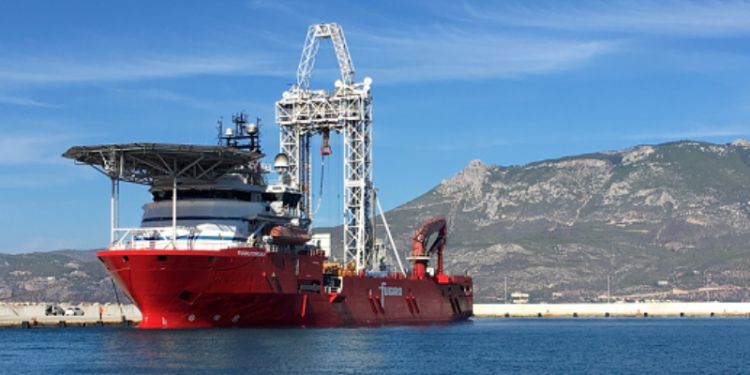New ocean drilling results reveal how global climate influences sediment input and basin water conditions in a young rift

School of Earth and Environment staff were recently part of the Science Team for IODP Expedition 381
New results from the Gulf of Corinth, Greece, a continental rift zone where the first stage of ocean basin formation is taking place, show how the environmental conditions and sediment input into the rift basin changed as the Earth alternated between non-glaciated to glaciated conditions over the last 500 thousand years. Young rift basins, such as the Gulf of Corinth, are known to be sensitive recorders of past changes in climate and sea level and of the chemical and biological conditions of the waters they contain. Nonetheless, the changes observed in the Gulf of Corinth were more dramatic and complex than anticipated. The volume of sediment filling the rift basin increased dramatically when the Earth was experiencing glaciated conditions compared with periods when the Earth was not glaciated.
This is an important discovery for understanding the impact that global climate fluctuations have on the history of sedimentation, particularly for the earliest sediments deposited as new ocean basins form. The process of continental rifting is fundamental for the formation of new ocean basins, and these basins are the source of a large proportion of the Earth’s hydrocarbon resources. Therefore their history of sedimentation informs how hydrocarbons are formed and where they may collect.
The results come from a new scientific ocean drilling expedition conducted as part of the International Ocean Discovery Program (IODP) and are published this week in the journal Scientific Reports in an article entitled “High-resolution record reveals climate-driven environmental and sedimentary changes in an active rift”. IODP Expedition 381 went to sea from October to December in 2017 on the drilling vessel Fugro Synergy, and the sediment cores and downhole data retrieved were analysed in February, 2018 by a 35-member team of international geoscientists. The Expedition and new publication was led by Professor Lisa McNeill from the University of Southampton, UK and Professor Donna Shillington of the Lamont-Doherty Earth Observatory of Columbia University, USA. Dr Richard Collier and Dr Carol Mahoney of the School of Earth and Environment contributed as part of the science team.
“This is the first long and high-resolution sediment record of the early rifting process ever obtained”, Lisa McNeill comments. “At one site, an expanded 700 m section records the last 800,000 years of rift basin history.” The cores have revealed how the conditions changed as global-climate and ice sheet growth reduced sea level and isolated the Corinth basin from the open ocean. The reduced salinity severely restricted the range of organisms that could inhabit the waters under such stressed conditions. These fluctuations occurred once every ~100,000 years as global climate changed.
The most striking result is that the rate of sediment flux into the basin increases by a factor of 2-7 during the globally glaciated periods relative to the non-glaciated periods. This is recorded in the relative thicknesses of the sedimentary fill of the rift basin during these different periods. Donna Shillington explains, “We argue that this change is not caused by increased precipitation and erosion during glacial times, but rather by a reduction in vegetation cover and a change in the type of vegetation during glacial periods leading to enhanced erosion.” This is an important result for understanding the Eastern Mediterranean climate at this time and for the impact of global climate fluctuations on the rate of filling of sedimentary basins. Such basins are the source of a large proportion of the Earth’s hydrocarbon resources and their history of sedimentation, particularly in the early phase of rifting, informs how hydrocarbon source and reservoir rocks develop.
The science team also found that the sedimentation rates in the Holocene (the last 10,000 years) were much higher than earlier non-glaciated time periods. This is probably due to the human impacts on the landscape of mainland Greece, deforesting the landscape and increasing slope erosion rates over a period of ~4000 years.
More information:
About the expedition – www.ecord.org/expedition381
About the research programme – www.iodp.org
About the European part of the programme – www.ecord.org
Expedition Blog: https://esoexp381corinthactiveriftdevelopment.wordpress.com/




